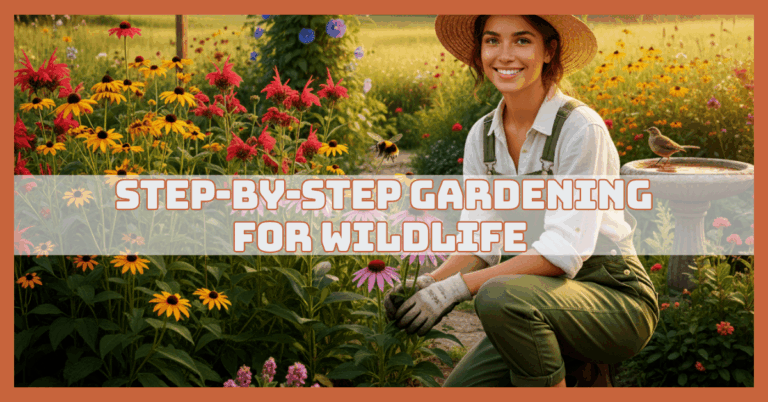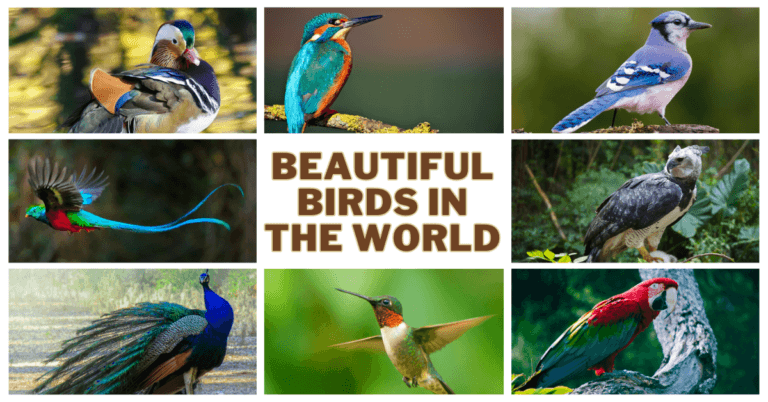Interesting Facts About Squirrels
Interesting Facts About Squirrels
With their lively and elegant nature, Squirrels have captivated the curiosity of nature enthusiasts and observers for ages.
These small, furry creatures exhibit remarkable adaptations and behaviours that make them intriguing study subjects.
From their tree-dwelling abilities to their impressive nut-hoarding skills, squirrels have a charm that never fails to fascinate.
This article will explore some of the most interesting facts about squirrels. Get ready to discover the secrets of their acrobatic feats, cheeky habits, and vital role in the ecosystem.
Join us on a journey to uncover the captivating world of squirrels and gain a newfound appreciation for these charismatic little mammals.

1. Variety Of Species Of Squirrels
Over 200 species of squirrels exist in different regions of the world, making them a diverse group of mammals.
They are a member of the Sciuridae family, along with flying, flying, ground, and flying squirrels and chipmunks.
Each squirrel's distinct traits and adaptations enable it to flourish in its habitat. Tree squirrels, for instance, can easily navigate tree branches with their muscular limbs and razor-sharp claws.
On the other hand, ground squirrels‘ terrestrial lifestyle is ideally suited to them; they build burrows for protection and hibernate during the winter.
The patagium, a skin flap that spreads between the limbs of flying squirrels, gives them astonishing gliding ability and allows them to move between trees easily.
Since there are so many kinds of squirrels, it is easy to see how adaptable and successful these interesting animals have been throughout evolution.

2. Squirrels Are Tree-Dwelling Experts
Squirrels are widely known for their ability to live in trees. Due to their quick bodies and specific adaptations, they are superb climbers.
They can easily ascend tree trunks thanks to their sharp claws' great grip on various surfaces, including bark.
Additionally, squirrels can swivel their rear limbs and establish a strong foothold on uneven surfaces because of their flexible joints, notably in their ankles.
Thanks to their powerful hind limbs, they have the strength and propulsion to leap from branch to branch.
Squirrels are also renowned for having exceptional balance, which enables them to maneuver through tight spaces on units without losing equilibrium.
They move at amazing speeds while maintaining their safety thanks to their excellent spatial awareness and rapid reflexes as they maneuver through the intricate web of branches.
Squirrels exhibit their capacity to adapt to their environment and tree-dwelling skills, whether foraging for food, looking for shelter, or running from predators.
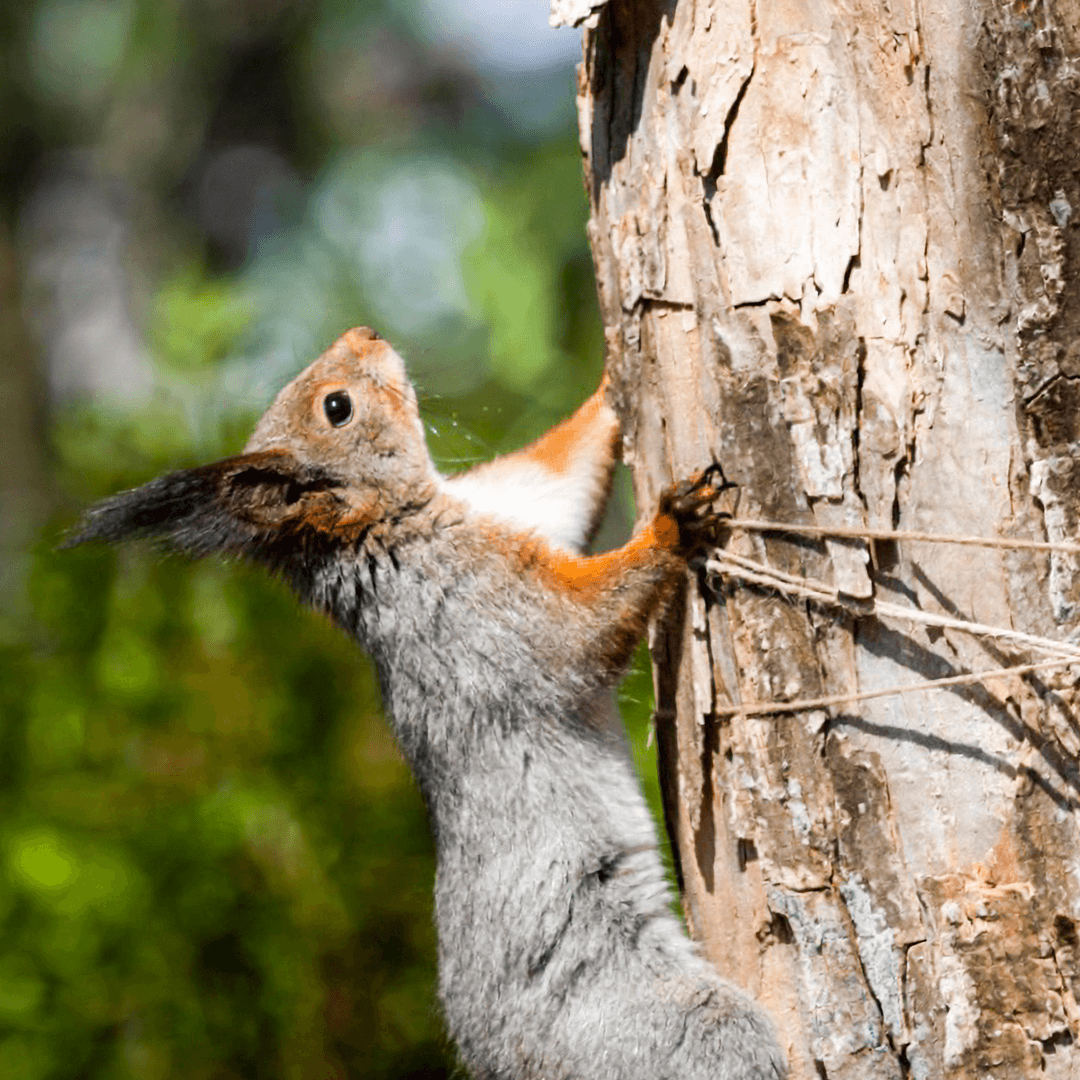
3. Squirrels Are Agile Acrobats
The agile acrobats of the animal realm, squirrels, captivate us with their amazing skills and quick movements.
These cute, endearing creatures are known for their acrobatic tricks and exhibit amazing agility as they move through their environment.
Squirrels smoothly move through the treetops, enthralling onlookers with their aerial performances, which include soaring leaps and beautiful landings.
Their long, bushy tails act as a balancing device, helping them to keep their balance and perform precise moves in mid-air.
Squirrels' acrobatic talent, whether leaping from branch to branch or gently gliding through the air, is evidence of their incredible adaptability and survival abilities.
Join us as we explore the intriguing world of squirrels and learn the surprising techniques behind their nimble acrobatics.
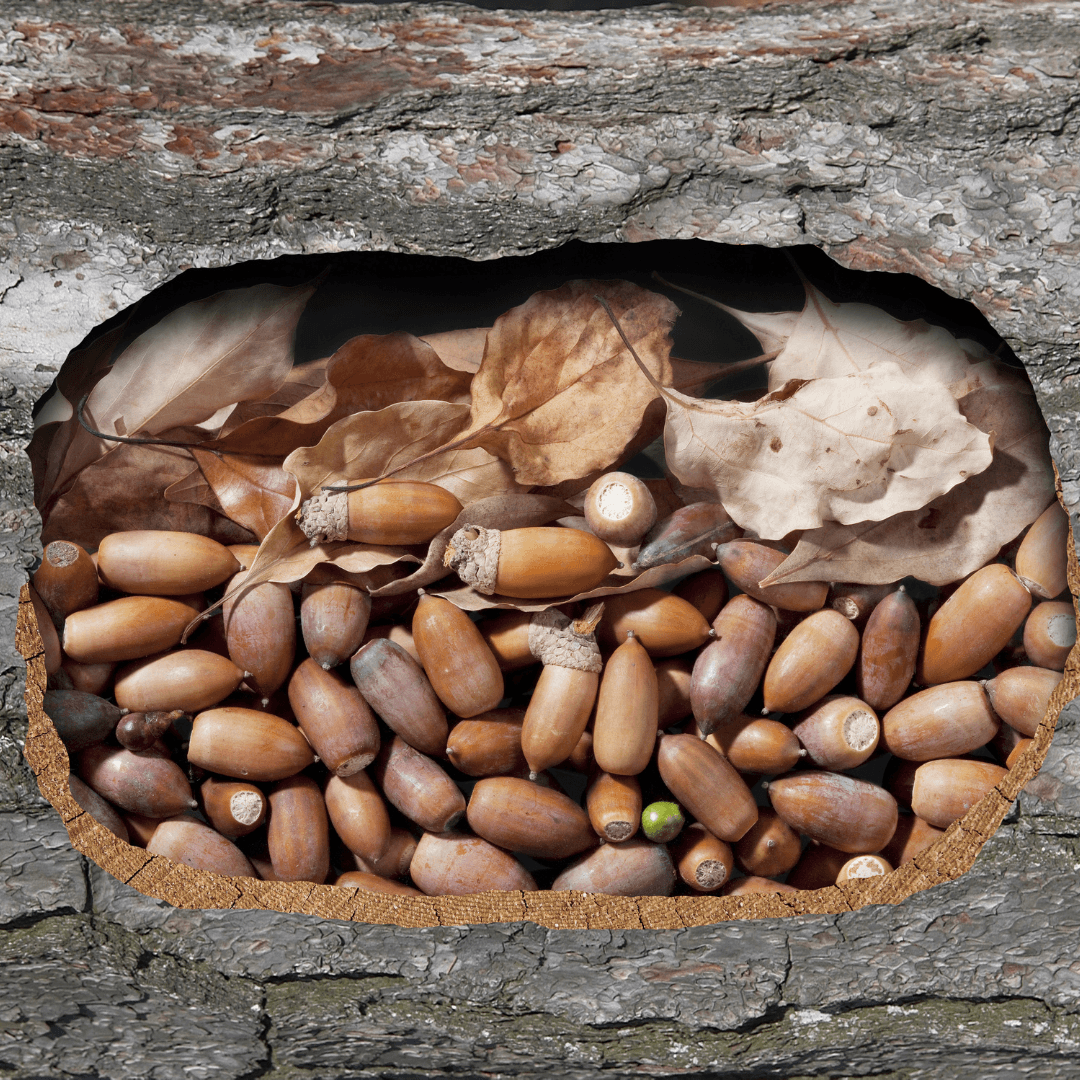
4. Squirrels Are Nut Hoarders
Squirrels aggressively harvest nuts and seeds in the fall to take advantage of the plentiful food supply at that time of year.
They use a cunning tactic called caching, in which they bury or hide their food in various places to be consumed later.
The best nuts are meticulously chosen by squirrels, who ensure they are of the highest calibre and lack deterioration.
They place the nuts in shallow depressions or little holes they have dug in the ground one by one.
Some squirrels keep nuts in bird feeders, tree cavities, and even inside the framework of buildings.
Despite dispersing their food across a wide area, they have an amazing memory for the exact placement of their caches.
They use visual landmarks, olfactory clues, and their excellent memory to locate the food they have stored and retrieve it when needed, even months later in the winter when food is in short supply.
Spatial memory is an essential survival trait for squirrels that keeps them alive when food supplies are scarce.
Studies have revealed that squirrels can accurately recall the locations of their caches, even in complex situations.
They can easily find and uncover their buried treasures, which gives them access to a critical food supply when other resources are scarce.
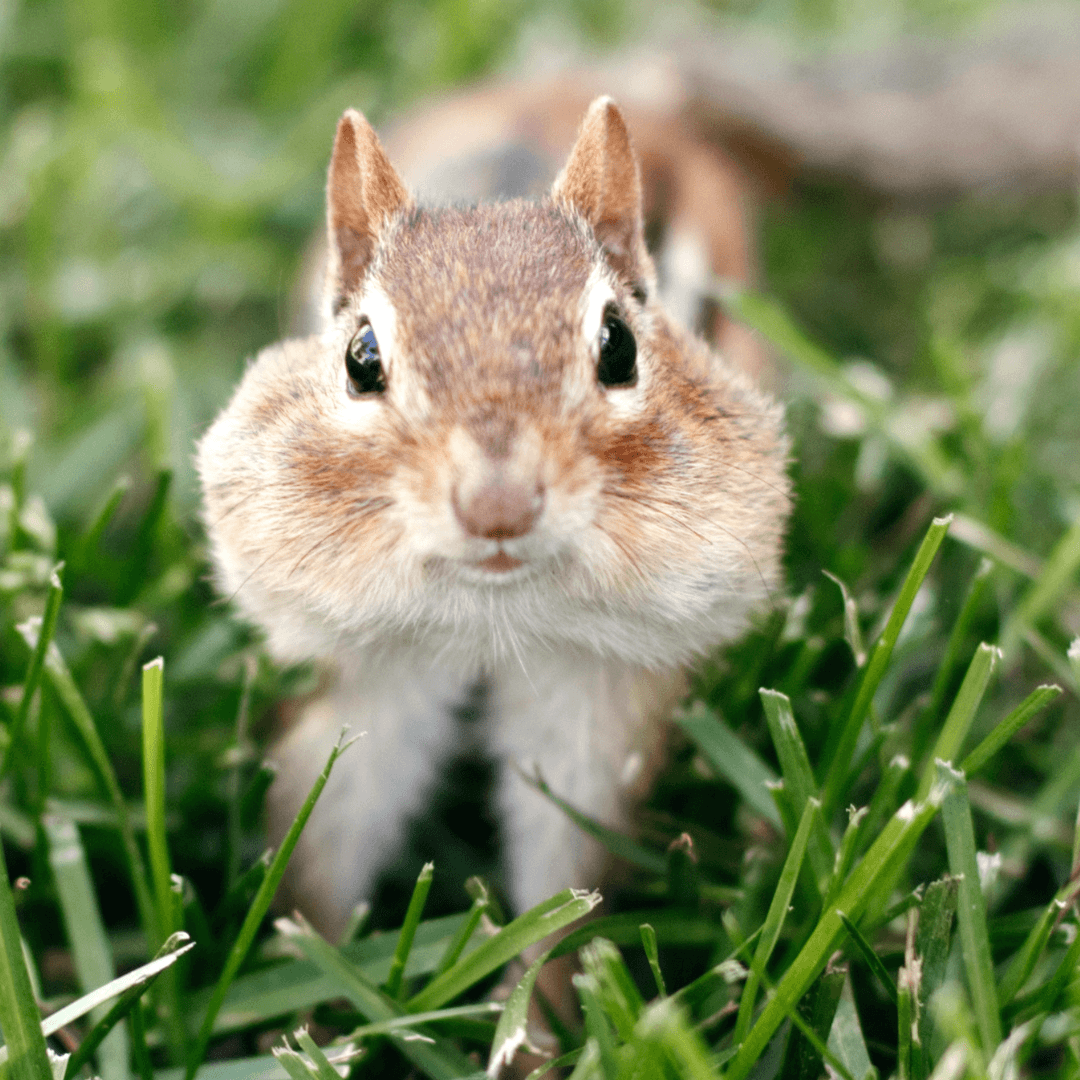
5. Squirrels Have Distinctive Cheek Pouches
Squirrels' distinctive cheek pouches are one of its most remarkable adaptations. They have elastic, extensible cheek pouches on either side of their mouths.
When squirrels discover food, particularly nuts, seeds, or berries, they gather it fast and cram it into cheek pouches.
Squirrels can transport a sizable amount of food in pouches, which can expand to an astonishing size.
Squirrels' expanding cheek pouches have various uses. First, they give animals a quick and easy way to return food to their nests or storage spaces.
Squirrels use their cheek pouches to continue foraging without constantly returning to their food source. Because they can carry a lot of food in their mouths, squirrels can maximize their energy.
The cheek pouches also guard against food damage and spoiling while in transit. By securing the food in their pouches, squirrels can prevent losing or dropping valuable food when travelling through trees or across open areas.
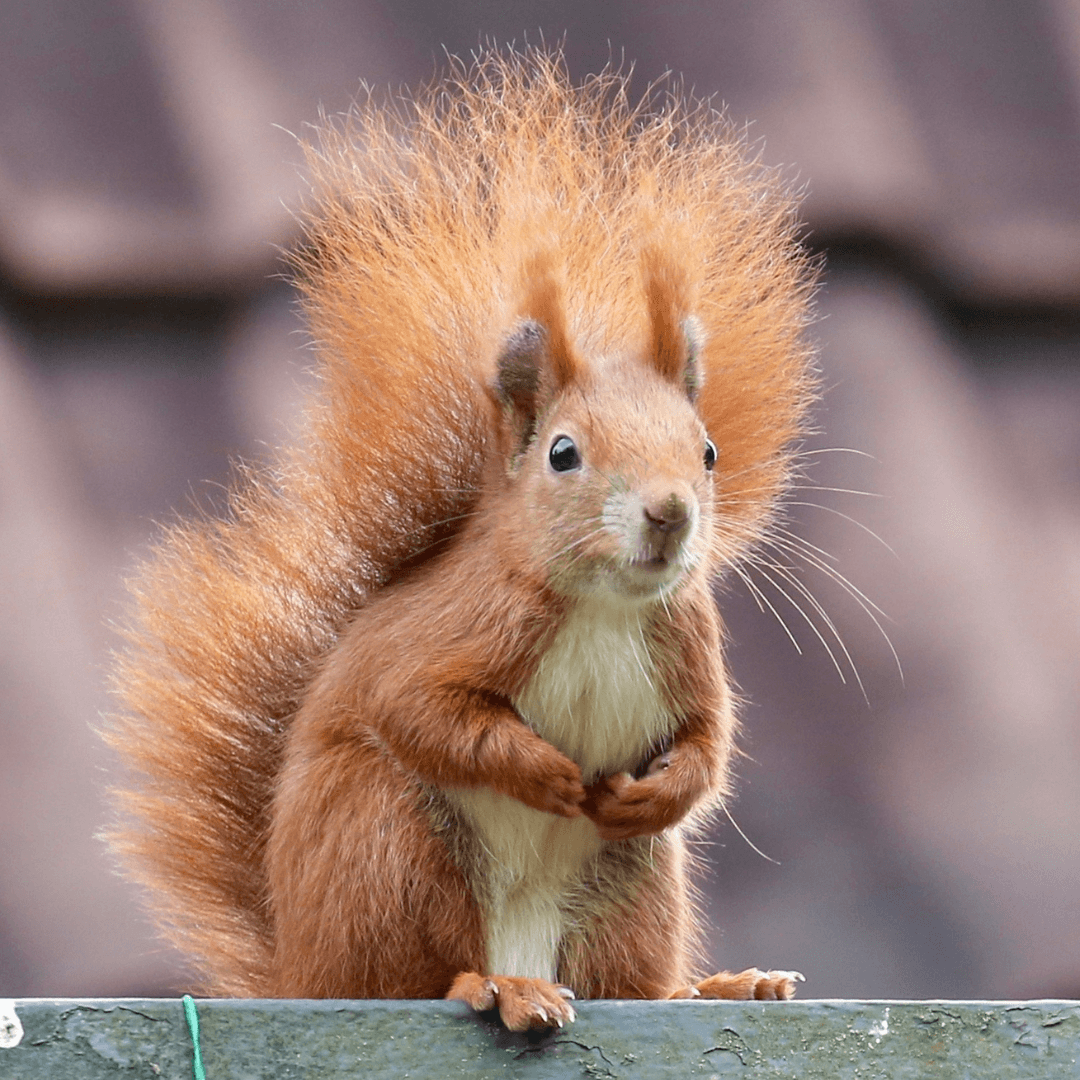
6. Dental Prowess
Squirrels possess a remarkable dental adaptation that allows them to maintain their teeth at an optimal length.
Their incisors, the sharp front teeth, have a unique characteristic – they continuously grow throughout their lives.
This continuous growth is necessary because the constant gnawing and wear on their teeth can lead to gradual wearing down.
To prevent their incisors from overgrowing, squirrels engage in persistent gnawing behaviour. They use their powerful jaws and sharp incisors to chew on various materials, including tree bark, branches, nuts, and seeds.
The act of gnawing not only serves as a means to access food but also as a way to keep their teeth properly worn down.
Squirrels' preference for gnawing on hard surfaces, such as tree bark or wooden structures, is due to the abrasive nature of these materials.
The friction created during gnawing helps wear down their incisors, ensuring they maintain a usable length.
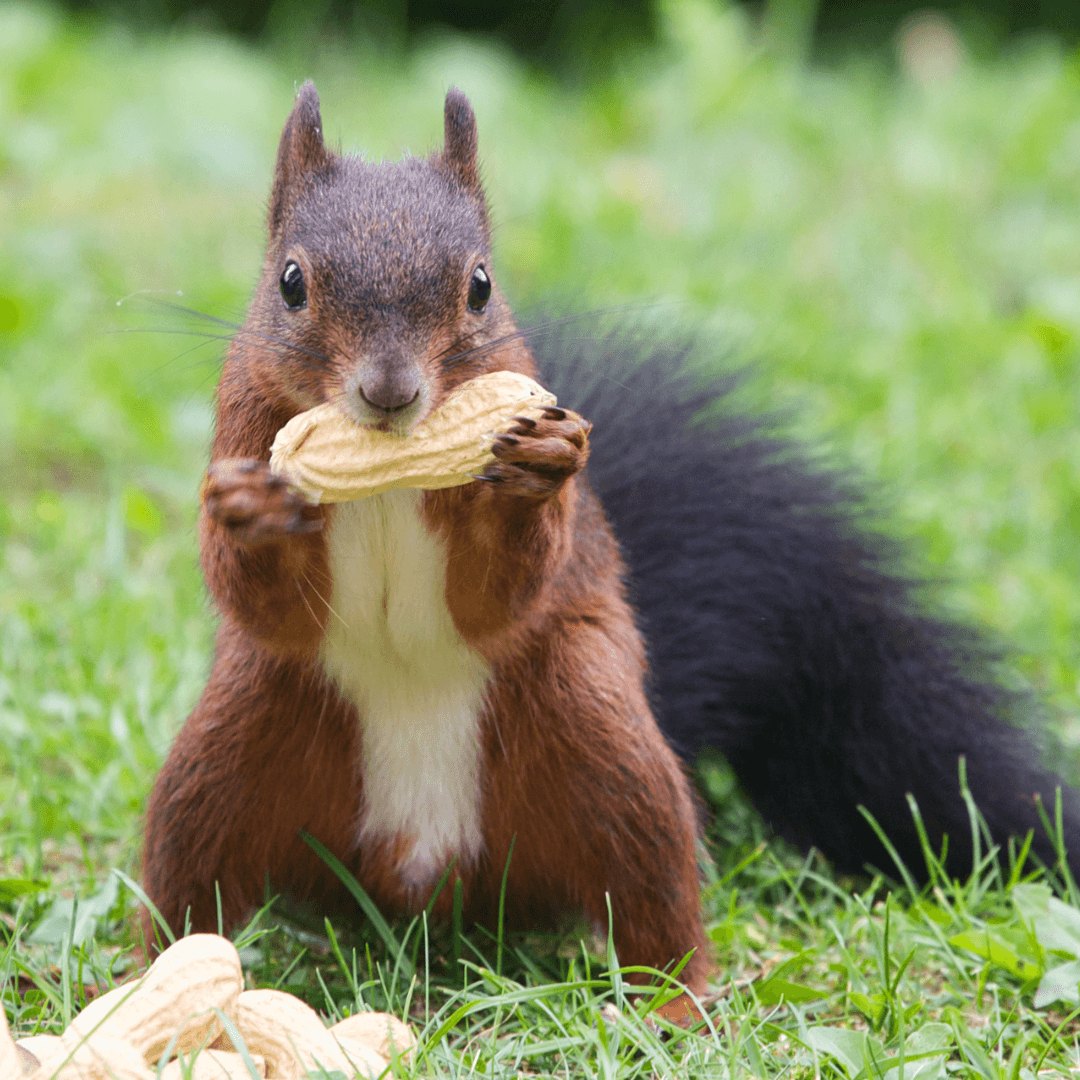
7. Squirrels Have Rich Communication Methods
Squirrels have a rich repertoire of vocalizations and body movements to communicate with each other.
One common vocalization is the chirp, a short and high-pitched sound that serves as an alarm call.
When squirrels detect a potential threat, such as a predator or unfamiliar disturbance, they emit rapid and repetitive chirps to alert other squirrels. This vocalization helps coordinate a group response and ensure the community's safety.
Interestingly, squirrels can also produce purring sounds similar to those of cats. Purring is typically associated with contentment and relaxation.
Squirrels may purr when relaxed during grooming or with their offspring. Purring can also be a form of communication between mating pairs, expressing their connection and mutual comfort.
In addition to vocalizations, squirrels utilize body movements to communicate. They can flick or twitch their tails as a visual signal to indicate various messages.
A rapid tail flick signifies heightened alertness or agitation, signalling potential danger or environmental disturbance. On the other hand, a relaxed or slowly waving tail indicates a sense of calmness and security.

8. Squirrels Have Amazing Adaptability To Urban Environments
Squirrels have remarkably adapted to city life, thriving in parks, gardens, and city streets. Despite the difficulties brought on by human development, they have developed innovative ways to utilize the resources at their disposal.
Their capacity to locate food in urban areas significantly indicates their adaptability. Although nuts, seeds, fruits, and insects make up the majority of urban squirrels' natural diets, they have adapted to include human food sources as well.
They even attack rubbish bins for food, rummaging through trash for items like leftover snacks or birdseed from feeders.
Squirrels have gotten good at identifying ideal nesting locations in cities in addition to food. They have evolved to use man-made structures like attics, chimneys, and abandoned buildings as alternate nesting locations, even though their traditional nesting habitats are often tree cavities.
By building nests out of twigs, leaves, and other materials, squirrels show their ingenuity and ensure they have a cozy place to raise their young.
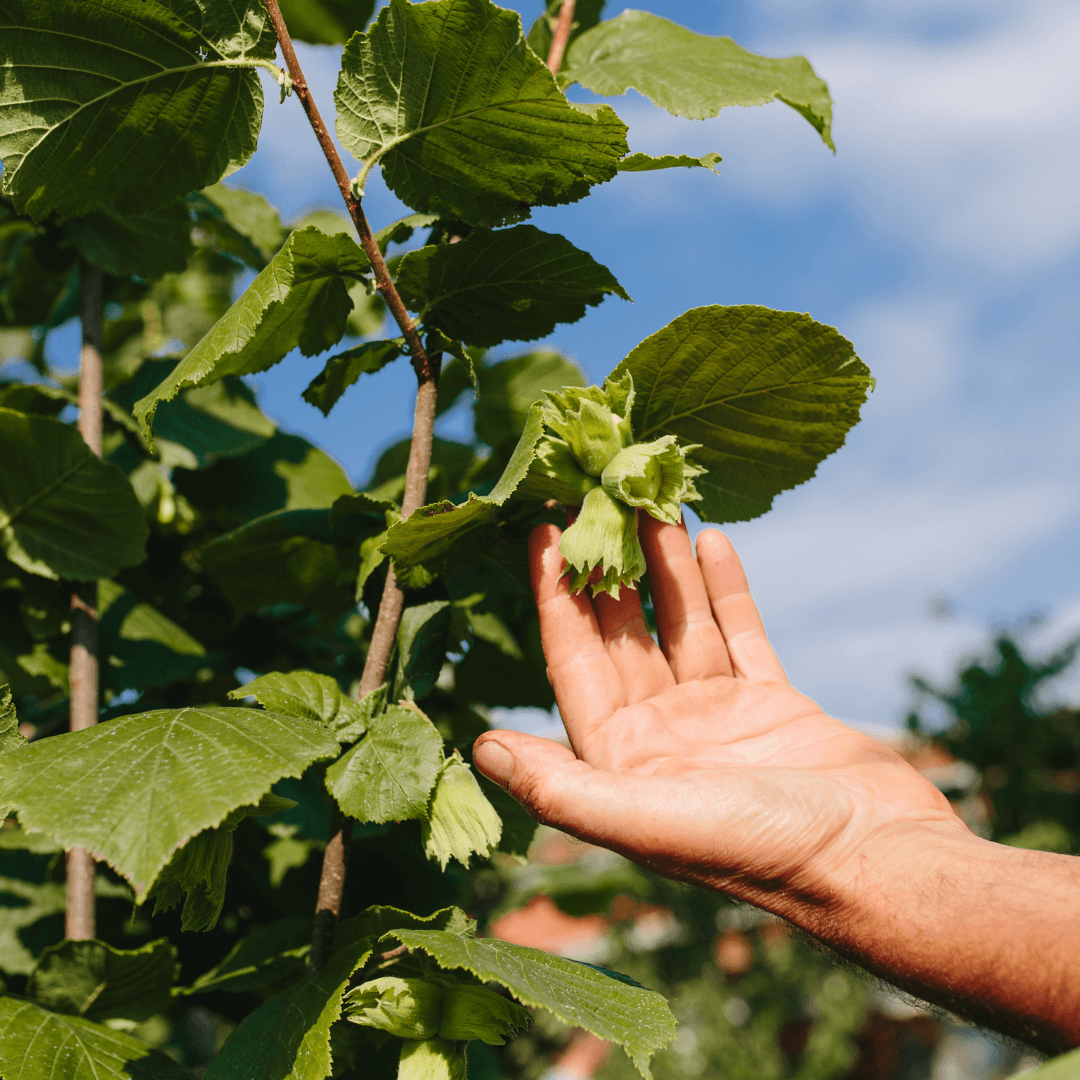
9. Squirrels Have Ecological Importance
As seed dispersers in forest habitats, squirrels perform a significant ecological role. As part of their hoarding tendency, they frequently bury the nuts and seeds they harvest during the autumn season in various places.
Cache dispersal is this behaviour, greatly impacting biodiversity and forest regeneration. Squirrels effectively move seeds away from the parent tree by burying them, which lessens competition for resources and improves the likelihood of successful germination and establishment.
Thus, squirrels serve as “ecosystem engineers,” aiding the spread and colonization of tree species throughout
Squirrel feeding patterns, favouring some nuts and seeds over others, can significantly affect plant communities and alter the makeup of forests.
Squirrels indirectly affect the distribution and abundance of many plant species in the ecosystem by favouring particular tree species through their seed preferences.
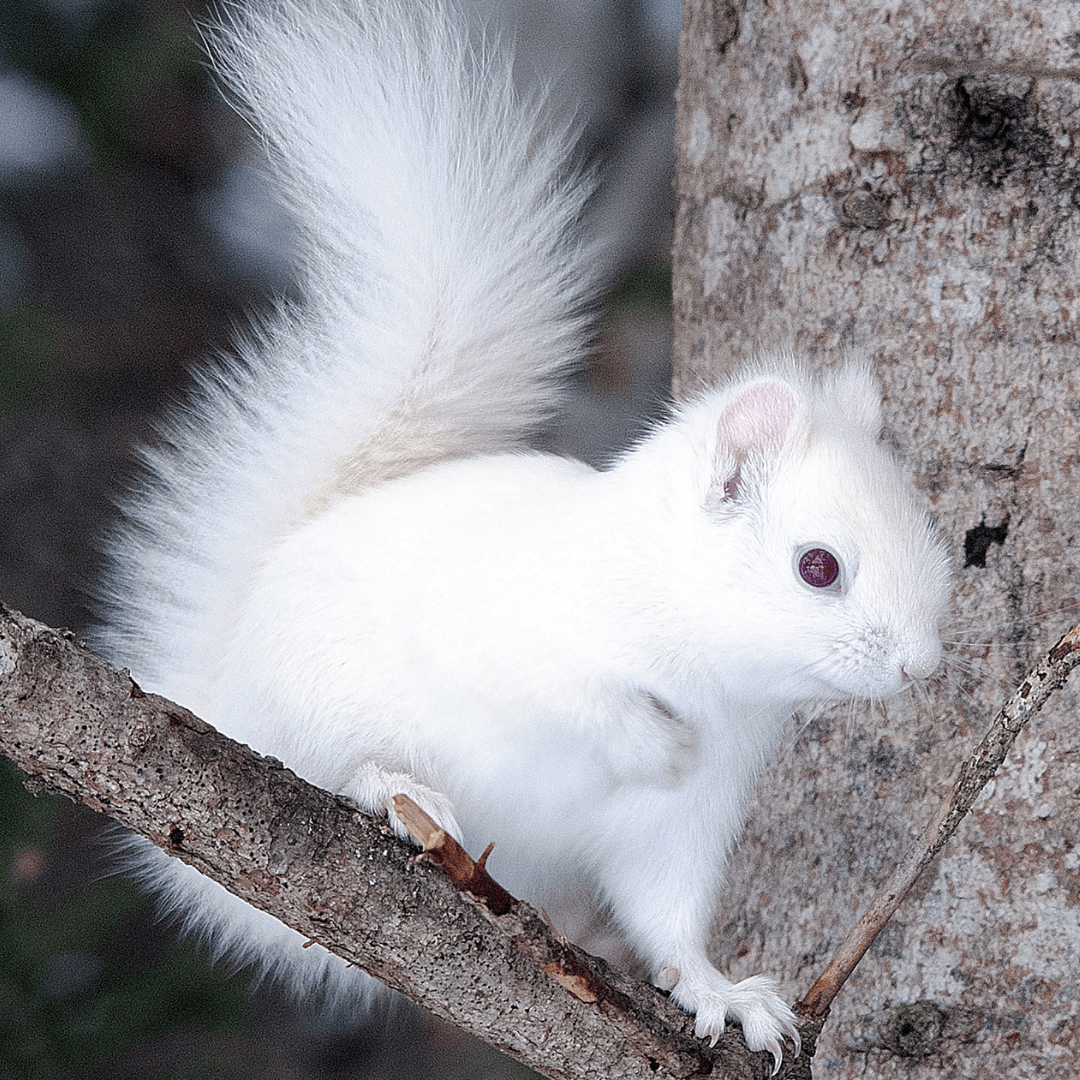
10. Squirrels Come In Colourful Variations
The intriguing variety of hues and patterns that squirrels exhibit varies depending on the species.
Most squirrel species encountered frequently, like the Eastern gray squirrel, have a grey coat that makes blending in with their urban and woodland surroundings easier. Thanks to this camouflage, squirrels receive some protection from prospective predators.
Squirrels are not entirely gray, though. Some species, such as the Eastern fox squirrel, display a wider colour spectrum, including red, brown, and black tones.
The genetic variation among the squirrel population is responsible for these variances in coat colour.
In addition to camouflage, coat colours can act as visual cues for communication and mate choice. Like the red squirrel, the vivid reddish-brown fur of some species works as an attraction.
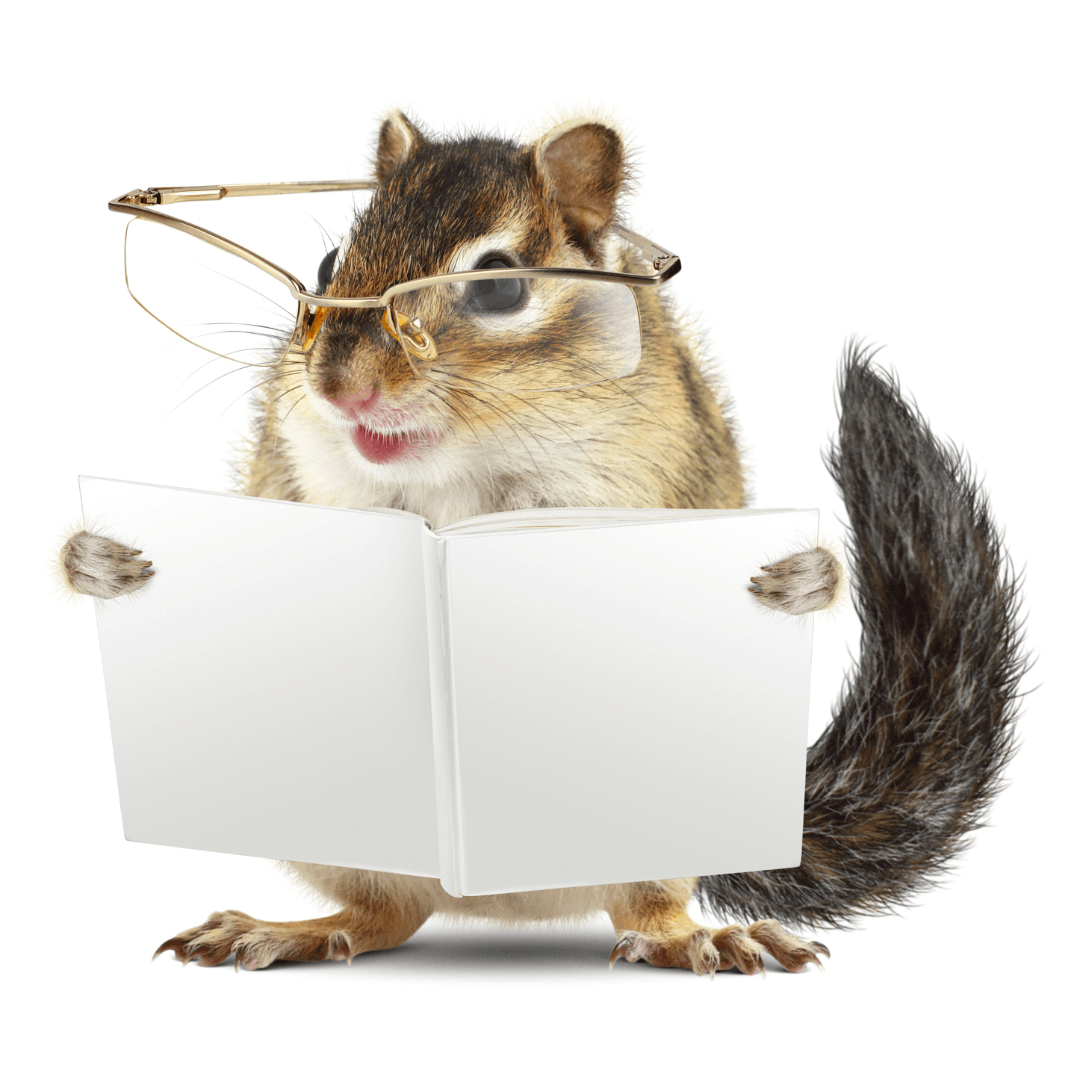
11. Squirrels Are Intelligent
Squirrels have extraordinary cognitive abilities that have intrigued onlookers and experts. They can solve problems, retain information, and maneuver through challenging settings.
One sign of squirrels' intelligence is their extraordinary problem-solving abilities. Squirrels are renowned for their inventiveness in solving problems to obtain food.
They can, for instance, decipher intricate systems on bird feeders or outwit numerous obstacles erected to access food supplies.
They are skilled at learning from mistakes they make, using that knowledge, and changing their behaviour as a result.
Additionally, squirrels have exceptional memory skills. They can remember, even months after the fact, where they buried various food caches.
Their spatial memory allows them to access their concealed food stockpiles when food is scarce.
Their memory abilities also allow them to navigate their surroundings quickly, recall the structure of their territory, and locate prospective food sources.

12. Squirrels And Mutualistic Relationships
Squirrels interact with various other creatures in mutually beneficial ways, which adds to the complex ecological dynamics.
These connections demonstrate the interdependence of several species through interactions with mushrooms, birds, and insects.
The interaction of squirrels with specific fungi illustrates a mutualistic relationship involving squirrels. It is well known that squirrels include the fruiting bodies of fungi, such as mushrooms, in their diet.
They unintentionally assist in spreading fungus spores. Spores adhere to their fur or are discharged in their droppings as they move through the forest and forage, spreading to new places.
The fungus fungi form this by widening their range, increasing their chances of reproduction.

13. Squirrels Developed Amazing Adaptations To Winter
Squirrels have developed extraordinary adaptations to withstand the difficulties of winter, ensuring their survival during times of scarcity and inclement weather.
These adaptations include food storage, behaviours resembling hibernation, and bodily modifications.
Squirrels' capacity to store and retrieve food is among their most well-known adaptations. Squirrels collect and store nuts, seeds, and other foods in various places to survive the winter.
They have excellent spatial memory and can still recall where their secret food caches are even months later.
This habit gives them a ready food source when foraging becomes challenging or during the winter when food becomes limited.

14. Squirrels As Seed Dispersers
Squirrels are important seed dispersers in many ecosystems, promoting plant diversity, forest regeneration, and mutualistic interactions with certain tree species.
The movement of seeds and subsequent plant growth are greatly influenced by their foraging habits and capacity for memory on the locations of their food caches.
To save food for later use, squirrels frequently bury the nuts and seeds they have collected and hoarded.
There is a chance for seed distribution because squirrels only sometimes find all the hidden sources. Some buried seeds are left undisturbed, allowing them to sprout and develop into new plants.
Some tree species have mutualistic connections with squirrels and depend on them to effectively disperse their seeds.
Squirrels enjoy the seeds these trees produce, which frequently resemble nuts or fruits. They also spread the trees' roots, which helps to ensure their survival and healthy reproduction.

15. Squirrels And Bird Feeder Interactions
Squirrel and bird feeder interactions may be entertaining and difficult. Regarding gaining access to bird food, squirrels are renowned for their ingenuity and agility, and their presence near bird feeders can occasionally result in conflict between birds and squirrels for food.
Squirrel and bird feeder interactions may be entertaining and difficult. Regarding gaining access to bird food, squirrels are renowned for their ingenuity and agility, and their presence near bird feeders can occasionally result in conflict between birds and squirrels for food.
Barriers can be physical obstacles like cages or cones, whereas baffles are dome-shaped constructions that make it difficult for squirrels to climb up the pole or tree trunk. Squirrels can be deterred by changing the area around the bird feeder.
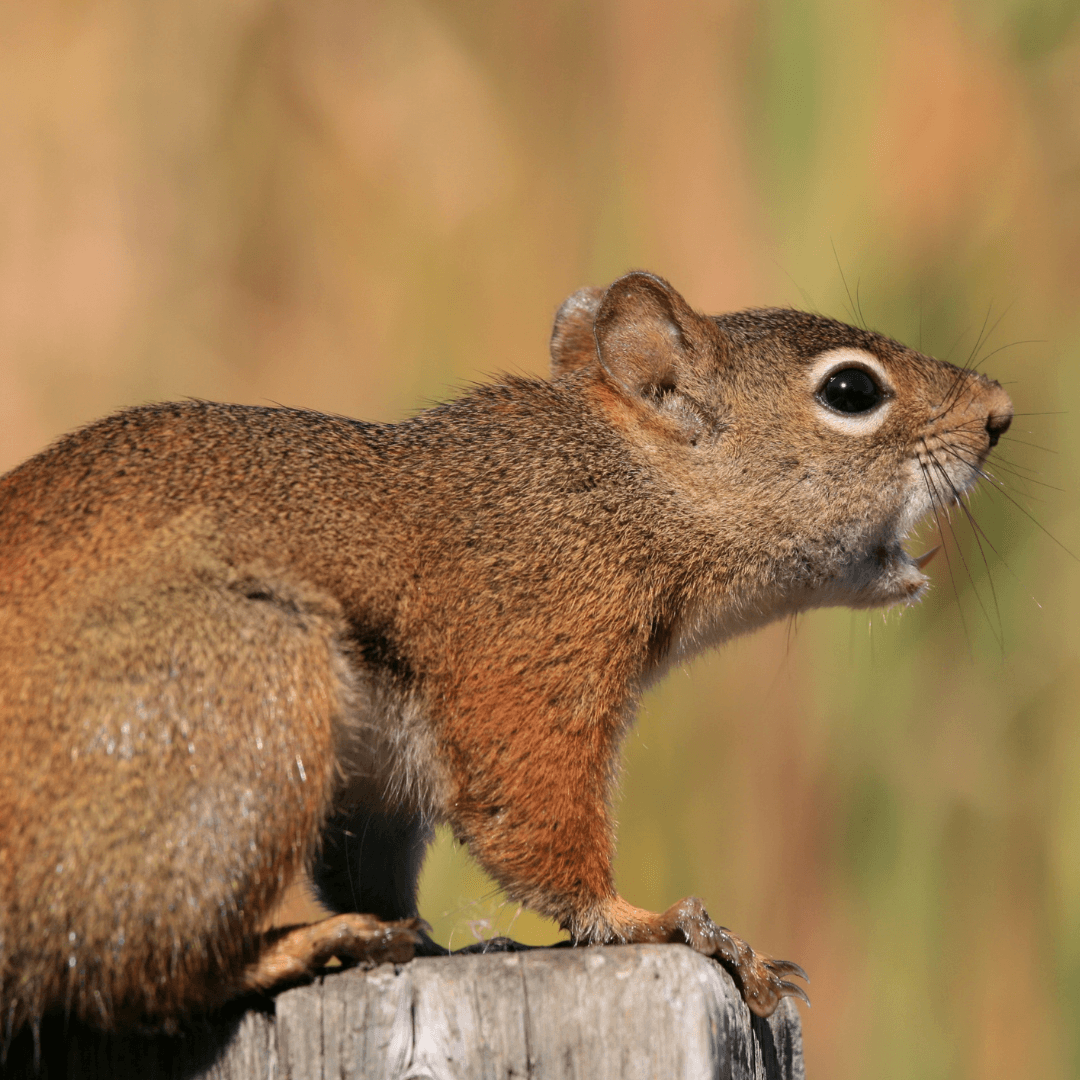
16. Squirrel Vocalizations
Squirrels communicate with one another by using a variety of vocalizations and body language.
These signals have several uses, such as warning others of impending danger, delineating territory, and promoting social interactions within communities of squirrels.
The alarm cry, a high-pitched chirp or shriek, is one of the most prevalent vocalizations. Squirrels use this call to warn other animals of impending dangers, such as predators or oncoming people. Squirrels make these warning cries to alert other surrounding squirrels and animals of danger.
Squirrels communicate with their bodies as well. As part of territorial displays, squirrels may engage in aggressive actions like tail-flicking, chasing, or even physical conflict with competitor squirrels. These behaviours aid in drawing lines between territory and establishing dominance.

17. Squirrel Senses And Perceptions
Squirrels have exceptional sensory qualities that help with their foraging and survival. Their acute eyesight lets them see far-away predators or food sources and detect movement.
Their outstanding colour vision allows them to discern between ripe and unripe fruits and nuts.
Another important sense for squirrels is their sense of smell. Their highly developed sense of smell enables them to pick up on environmental cues, like the presence of predators or potential partners and other odours.
To find concealed food caches or identify the scent trails other squirrels leave, squirrels rely on their sense of smell.
Tactile sensitivity is equally crucial for squirrels. Using unique touch sensors on their paws, animals can judge the texture and quality of objects like food or tree bark.
They also benefit from having a sense of touch when handling and manipulating things while foraging.
Conclusion
In conclusion, squirrels are fascinating creatures that captivate us with their acrobatic skills, resourcefulness, and unique adaptations.
From their agile tree-climbing abilities to remarkable hoarding behaviours, squirrels have evolved to thrive in diverse habitats worldwide.
Their role as seed dispersers and their interactions with other organisms contribute to the balance and diversity of ecosystems.
By appreciating these interesting facts about squirrels, we understand their ecological importance and how they have adapted to survive and thrive in their environments.
So, the next time you spot a squirrel scampering across a park or your backyard, take a moment to observe and appreciate the wonders of these charismatic and industrious creatures.
I trust you enjoyed this article on the Interesting Facts About Squirrels. Please stay tuned for more blog posts to come shortly.
JeannetteZ
>>>Please click here to read my all-inclusive article about Why Is Wildlife Important And How Can We Protect It<<<
Your Opinion Is Important To Me
Thoughts? Ideas? Questions? I would love to hear from you. Please leave me your questions, experiences, and remarks about this article on the Interesting Facts About Squirrels in the comments section below. You can also reach me by email at Jeannette@Close-To-Nature.org.
JeannetteZ
Disclosure
This post may contain affiliate links. I earn from qualifying purchases as an Amazon Associate and other affiliate programs. Please read my full affiliate disclosure.
You might also enjoy the following blog posts:
All About Wild Turkeys – A Large Shy Bird
Interesting Facts About Woodpeckers
Healthy Natural Dog Food – Grant Your Dog a Longer Life
How To Train Your Puppy Not To Jump
How To Train Your Puppy Not To Bite





